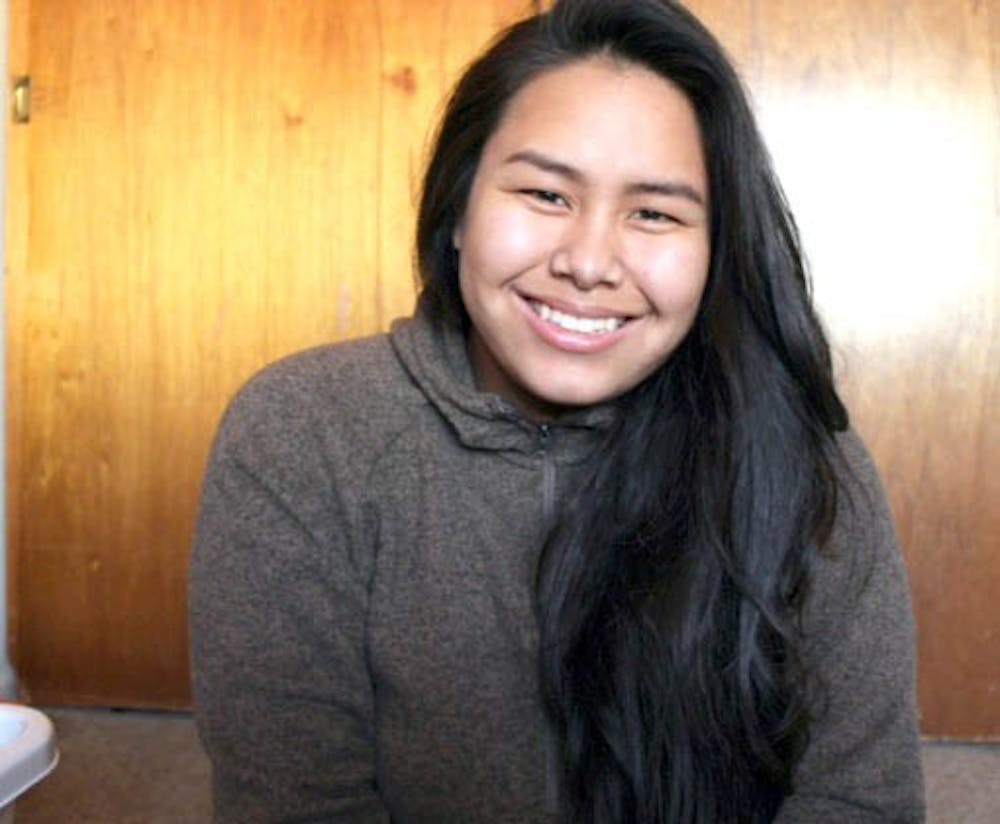By Angela Hatcher, News Editor
Natasha Quitano greets customers who walk into Krishna with a smile, telling them to grab a seat wherever they want. She's been working there for roughly two months. She loves her coworkers, manager, customers, and she loves the food.
When Natasha turned 15 years old, her summer was not spent lounging on the beach like it had been for the past 14 years. Instead, she spent her time packing and preparing for the 7,051 mile move from her home of Saipan to the United States.
Not Samoa, not Spain, but Saipan.
Saipan is the second largest island of the Northern Mariana Islands, a fourteen chain island, all of which are U.S. territories. It is located in the Pacific Ocean, near the Philippines and Guam.
The island is 12 miles long and 5.6 miles wide.
"It's a dot on the globe," Natasha said.
Home to the Chamorro people, the island's population is roughly 48,000, according to the 2010 United States Census.
Natasha is half Chamorro and half Thai.
She has 14 half siblings and one full blooded sister, who she grew up with. Out of her 16 siblings, she and her sister are the youngest. She didn't grow up with her 14 other siblings because they had a different mother. Part of the reason she moved here was because her dad, who is Chamorro, and her mother, who is Thai, decided to separate.
Oxford, Ohio: A town her mother viewed as a package deal because of Talawanda high school and Miami University. Saipan has only three high schools and one university which is more of a community college.
"America just has more opportunity," she said.
And so the journey to Oxford began.
She is a first year art major. Her main focus is studio art, rather than graphic design. Her favorite medium used to be graphite because she specialized in portraits. But she paints a lot more nowadays.
"I sold more of my paintings than my portraits," Natasha said. "I'll just post stuff on my Instagram, and if people like it, they ask to buy it.
In Saipan, when she was little, the frequent power outages left Natasha bored and idle, itching for something to do to keep busy. She had a Tom and Jerry coloring book that she would sit with and color for hours on end, even when the power came back on.
"That sticks out in my mind as one of the moments when I realized this is something that I'm good at," she said.
She is flourishing here at Miami, but that doesn't make being away from her home any easier. She misses her friends. She misses her family. She misses the feeling of sand between her toes and the scent of the salty ocean air.
She's far from home and she is reminded of that anytime someone asks her "what" she is.
A lot of people don't ask Natasha "what" she is, they just assume.
People assume Hispanic, oriental, Filipina, any kind of "Asian."
People who do ask all get it all wrong and are then surprised when she says, "I'm from Saipan."
"Wait, do you mean Spain?"
"No I mean Saipan," she'll respond, slightly amused, slightly annoyed.
"People are just really funny sometimes. I can't blame them for not knowing," she said.
"Is that like Samoa?"
"Where is that?"
"Wait, I'm sorry, where?"
Saipan, she'll say again. Or to Natasha, home.
"Oh, is that like Guam?"
Yes and no. Guam is like Saipan, they speak same language, Chamorro, but are more Americanized.
Saipan has a richer culture and clings to the world created and founded by the indigenous people, rooted in Chamorro tradition.
Life in Saipan was a walk on the beach, literally. A five minute walk out of Natasha's back door led straight to her childhood wonderland, the beach, where she would go whenever she had free time.
"I lived on a real life souvenir card that people send their families when they're on vacation," she said.
Thinking about home, Natasha's voice is tinged with nostalgia and sadness.
"Saipan is home, my first home," Natasha said. "But Oxford is my second home and I do love it here."
But her childhood, family and friends reside on that tiny island 7,000 miles away. She yearns for the day she can return and be reunited with the place she calls home.

